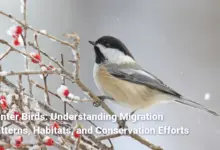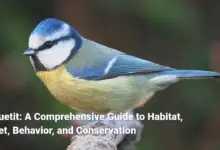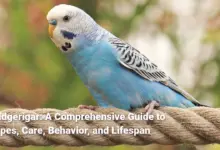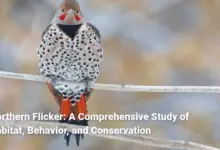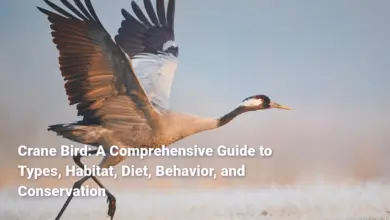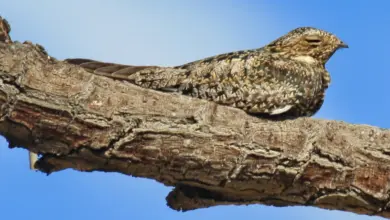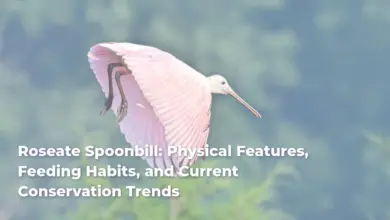American Robin: Detailed Insights into Description, Habitat, Behavior, and Conservation
A Comprehensive Overview of the American Robin: Description, Habitat, Behavior, Ecosystem Role, and Conservation Status
The American Robin (Turdus migratorius) is arguably one of the most recognizable and beloved songbirds in North America. Its stunning reddish-orange breast and melodious song resonate in gardens, parks, and woodlands across the continent, evoking a sense of joy and connection to nature. As one of the harbingers of spring, the robin’s arrival often signals the end of winter for many enthusiasts. With a robust body typically measuring about 9 to 11 inches in length and a wingspan ranging from 12 to 16 inches, this bird commands attention in its habitat. The American Robin’s adaptability allows it to thrive in a variety of environments, making it a common sight in urban, suburban, and rural landscapes alike.
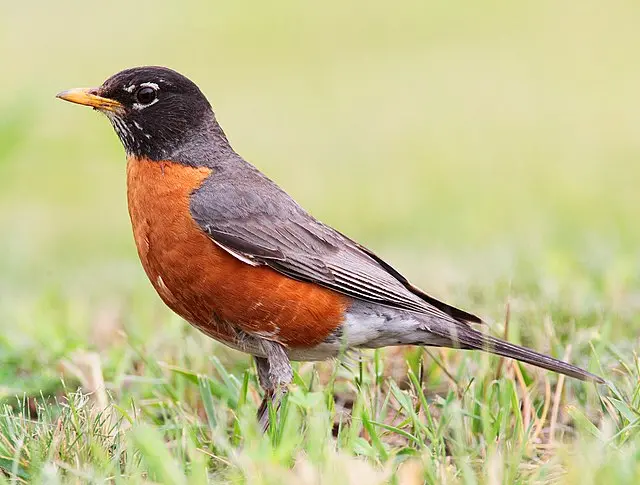
Robins are not just visually captivating; their behaviors, diets, and ecological roles render them essential components of their environments. This article delves into the many fascinating characteristics of the American Robin, exploring its physical appearance, vocalizations, habitat, and behaviors. We will examine how this bird contributes significantly to our ecosystems, its reproductive strategies, the challenges it faces due to environmental changes, and the conservation efforts being implemented to protect this iconic species. Whether you’re a birdwatching enthusiast or simply curious about one of nature’s picturesque symbols, the American Robin continues to capture hearts across the country.
Description and Characteristics
The American Robin is distinguished by a combination of unique physical features and adaptable behaviors that make it a remarkable avian species. A key aspect of its charm lies in its physical appearance, which evokes warmth and vibrancy, embodying the spirit of spring. The bird’s rich reddish-orange breast serves as a striking reference point, reminiscent of a glowing ember that draws one’s eyes, while its robust body is complemented by a contrasting brownish-grey back, creating an arresting palette that captivates observers.
Robins have a stout yet graceful build, with long legs that propel them into a captivating foraging style reminiscent of athletes sprinting on a field. They exhibit a head-cocking behavior while searching for food, lending them an inquisitive and attentive demeanor. With an average weight of around 2.7 to 3.1 ounces, they display an agile presence, darting gracefully across lawns and gardens in search of earthworms or berries.
An essential element in understanding the American Robin is recognizing the variation in characteristics between males and females. Male robins typically boast a deeper, more vibrant orange-red chest compared to their female counterparts, whose coloration is somewhat subdued. This distinction, akin to the difference between a sun setting vividly against a backdrop of clouds versus a muted twilight, adds to the charm of their breeding displays. Additionally, the robin’s recognizable yellow bill stands out against its darker head and adds to its overall appeal.
Summary of Characteristics:
- Habitat Adaptability: Robins adapt to woodlands, gardens, parks, and even urban areas, demonstrating an impressive range of living conditions.
- Diurnal Behavior: These birds are primarily active during the day, often foraging for food on the ground, where they cradle their body rhythmically while searching for prey.
- Social Structure: Outside the breeding season, robins are sociable creatures that flock together, especially during winter months.
This detailed overview of the American Robin encapsulates its physical characteristics and adaptability, encapsulating why it is one of North America’s most iconic birds. The vibrancy of its appearance, coupled with its melodious song, makes it a treasured sight and sound in the landscapes it inhabits.
Physical Appearance
When you first encounter an American Robin, the vivid color of its breast strikes you as if it were painted from nature’s most vibrant palette. The warm reddish-orange hue radiates through yards and parks, akin to the eye-catching attraction of a sunset, inviting the gazes of those who cross its path. This coloration is one of the most distinctive features of the species, rendering the bird easily recognizable. Male robins often exhibit a deeper and richer shade, while females sport a more muted version, showcasing what feels like nature’s own artistic brushwork.
Apart from the striking colors, the American Robin features a robust body that embodies strength and agility. Measuring in at about 9-11 inches (23-28 cm) in length, with a wingspan of 12-16 inches (30-41 cm) and weighing between 2.7 to 3.1 ounces (77 to 85 grams), these birds have a sturdy yet graceful physique. Their stout bodies are complemented by a rounded belly, engendering the appearance of well-formed athletes that seem ever-ready for a sprint across the ground. Long legs allow them both the necessary reach for ground foraging and enable them to navigate various environments with ease.
A closer look at their plumage reveals an intricate tapestry of textures; the upper part of the robin is cloaked in a range of brown shades from dark to dusty. The interplay between the earthy back and the brilliant chest creates a striking visual contrast, not unlike the play of light through leaves on a sunlit day. The robin’s head features white spots around the eyes, which add to its expressive aesthetic. White tips on the corners of their tails lend further charm, visually framing the bird as it flits from tree to tree.
Adding to its charisma is the robin’s signature yellow bill, which stands out against its dark head. This bill is not only visually appealing but functionally crucial, serving as a primary tool for foraging, digging, and cracking open fruits. The nuanced differences between male and female robins, including variations in head coloration, echo the subtleties of relationships where both partners play vital roles. In this fascinating dialogue of nature, the American Robin represents both individuality and connection, a hallmark of its enduring charm within our ecosystems.
Vocalizations and Sounds
The vocalizations of the American Robin are an essential element in understanding its behavioral repertoire, painting a vivid auditory portrait of its interactions. Known for its delightful and cheerful song, the male American Robin’s call consists of a series of pure, whistled notes, often arranged in distinct phrases – a melodic symphony that dances through the air. Listening to a robin’s song can evoke feelings of joy and renewal, much like the first light of dawn breaking through the darkness. Their songs typically rise and fall in pitch and are characterized by a steady rhythm marked by pauses, creating a seamless flow that captivates audiences.
Notably, the frequency of songs increases at dawn, seemingly ushering in a new day with eager enthusiasm. This phenomenon not only enhances the environment but signifies the importance of their calls in defining territory and attracting mates. The patterns of their vocalizations serve a dual purpose; while they express joy and resilience, they also communicate vital information regarding boundaries and alerts to potential threats.
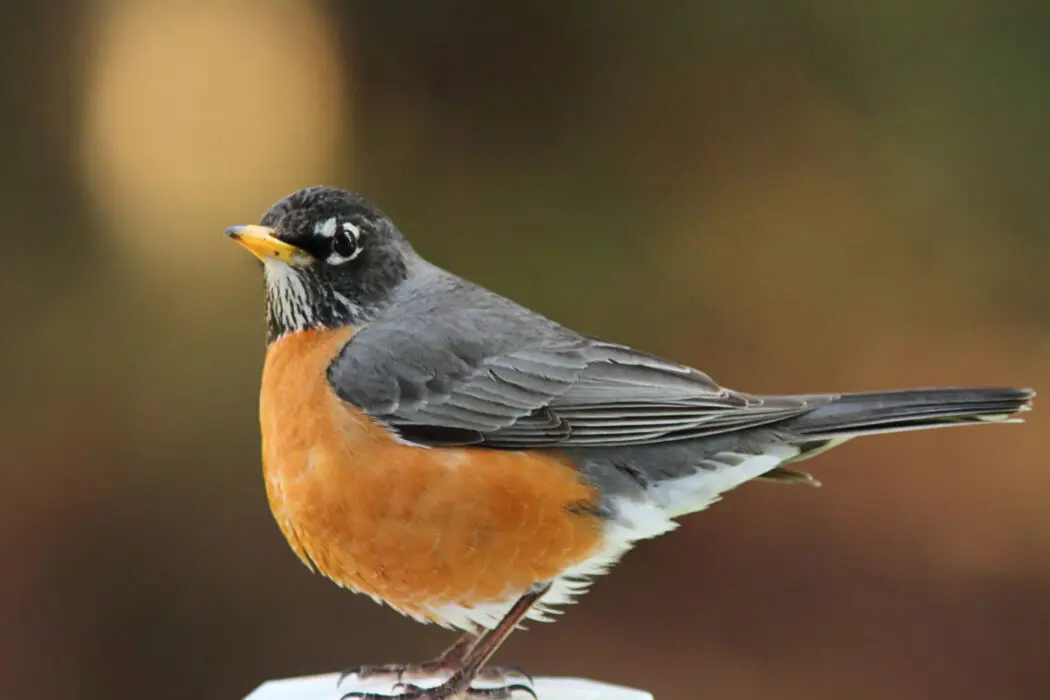
In addition to their melodious songs, American Robins produce a variety of other calls. Among these are alarm calls, such as the sharp “seer,” commonly emitted by females when a predator approaches their nest. Accompanying this call is often a bill clacking sound, serving as a warning meant to deter intruders. This dynamic auditory language reflects the robin’s adaptability, as it conveys immediate dangers while celebrating the joy of being alive.
When foraging, robins emit lower “cuck” notes that further facilitate their interactions with fellow birds. These subtle nuances in vocalizations highlight not only the complexity but also the significance of communication among robins, emphasizing the interplay between sound, social behavior, and environmental awareness.
Habitat and Distribution
American Robins are remarkably adaptable birds that flourish in a variety of habitats, displaying a resilience that allows them to thrive in diverse environments. Their avian presence can be detected across woodlands, suburban gardens, and urban parks, demonstrating a remarkable ability to adapt to human-altered landscapes. This adaptability is akin to a skilled artist who effortlessly shifts between styles, creating beauty in any setting they grace.
The distribution of American Robins spans an impressive range, from Alaska and Canada to regions in Mexico. They populate every state in the contiguous United States and are found in all ten Canadian provinces, showcasing a remarkable versatility that speaks to their ecological success. The robin’s capacity to inhabit various terrains from lush forests to grassy fields and even bustling cities highlights its role as a common thread linking different ecosystems.
American Robins typically inhabit areas where trees, shrubs, and open lawns provide ample food supplies and suitable nesting sites. Their unique preferences for mixed environments create opportunities for interaction, contributing to the diversity of bird populations within these locations. While they exhibit a remarkable ability to adapt, their presence also reflects a connection to healthy ecosystems that thrive with varied plant life.
In summary, the American Robin’s habitat adaptability and distribution patterns not only underscore its resilience but also its integral role as a common and cherished species in North America. These characteristics make it a living symbol of nature’s ever-evolving tapestry.
Preferred Environments
Though the American Robin is an adaptable species, it has specific preferences for environments that yield the most favorable conditions for nesting, foraging, and breeding. They are commonly found in a range of areas that embrace a mix of trees or shrubs interspersed with open ground spaces. Here are some of the preferred environments for American Robins:
- Forests: American Robins thrive in wooded areas, where the canopy provides shelter and the understory offers comprehensive foraging opportunities. They often forage for insects and fruits in these shady habitats, embodying a strong connection to nature’s flourishing ecosystems.
- Gardens and Parks: Suburban and urban gardens, as well as city parks, serve as prime locations for American Robins. Open lawns provide excellent foraging grounds for earthworms and seeds, and the availability of shrubs and small trees supports nesting behavior. It’s in these spaces that they can easily engage with people, drawing the admiration of birdwatchers and nature lovers alike.
- Fields and Meadows: Open fields and meadows allow robins to locate ample food sources, especially during warmer months when insects are abundant. These areas function as natural playgrounds for robins, where they can quickly dart about in careful search of their next meal.
- Urban Areas: Perhaps surprisingly, American Robins are adept at navigating urban landscapes. Nesting in trees and on building ledges, they have successfully adapted to city life, which provides suitable nesting sites and consistent food sources. Their presence in urban areas serves as a heartening reminder of nature’s resilience amidst human encroachment.
The American Robin’s preference for diverse environments illustrates its ecological adaptability, showcasing the species’ ability to not only survive but flourish in dramatically varying conditions. Such versatility highlights the importance of preserving and enhancing natural spaces for this and other avian species.
Migration Patterns
The migration patterns of American Robins are reflective of their adaptability and resilience, with a fascinating interplay of environmental factors guiding their journeys. Generally regarded as short-distance migrants, American Robins migrate primarily in response to seasonal changes and their search for suitable food sources.
Fall Migration: As autumn settles in and temperatures dip, American Robins often migrate south to warmer climates, seeking areas where food resources are still plentiful. This migration is highly dependent on berry availability, as robins rely heavily on fruits during the colder months. While some may travel hundreds of miles, others may only journey short distances, influenced by local food supplies and climate conditions.
Spring Migration: Early in the spring, robins return to their breeding grounds as temperatures begin to rise, and food becomes more abundant. Male robins are typically the first to arrive back, eager to claim territories and establish their presence. A few weeks later, females return, ready to engage in the breeding process. This seasonal timing perfectly aligns with the blooming of flowers and the emergence of insects, ensuring that the robins’ dietary needs are met during nesting.
Migration Flight: During migration, American Robins often fly in loose flocks, taking advantage of favorable weather conditions. They typically choose to travel during the day, flying at speeds of around 30 to 36 miles per hour. Depending on conditions and food availability, they can cover distances of approximately 100-200 miles in a day, making their migration a fascinating expedition filled with energy and purpose.
In summary, the migration behaviors of American Robins emphasize their adaptability and responsiveness to their environment. Understanding these patterns aids in appreciating how integral these birds are not only to our ecosystems but also to our seasonal rhythms and landscapes.
Behavior
The behavior of the American Robin is a fascinating subject, revealing the interplay of adaptability, social structure, and ecological roles. From their foraging techniques to their social interactions, robins exhibit an array of habits that contribute to both their survival and their status within the ecosystems they inhabit.
Feeding Behavior: Primarily foragers, American Robins exhibit a distinctive technique when searching for food. They can often be seen running several steps and then halting abruptly, a strategy that allows them to catch movement in the soil as they hunt for earthworms. When hunting, they adopt an attentive posture, cocking their heads to one side in a way that enables them to pick up sounds of potential prey. This focused vigilance accentuates their role as effective ground foragers, adapting their behavior to the availability of food sources.
Nesting Behavior: During the breeding season, male robins establish territories through their melodious songs, which serve both to attract females and to ward off rivals. Nest-building is primarily the responsibility of the female, who constructs a rounded cup-shaped nest using twigs, mud, and grasses. The common sight of a robin sitting steadfastly on a nest fosters everything from nurturing warmth to curiosity as observers await the eventual unveiling of the new chicks.
Social Behavior: Outside of the breeding season, American Robins showcase sociable behaviors, often forming large flocks during winter. These gatherings, akin to community festivals, provide advantages in finding food and offer protection from predators. During this time, robins congregate in trees to roost at night, creating a lively atmosphere alive with chirps and conversations. As breeding approaches, this social structure shifts to emphasize the defense of individual territories.
Overall, the multifaceted behavior of American Robins underscores their adaptability and resilience. Their behaviors seamlessly integrate with their daily lives and seasonal cycles, reflecting the complex tapestry of interactions that define their existence in varied environments across North America.
Feeding Habits
American Robins showcase diverse feeding habits that reflect their omnivorous diet and adaptability to their environments. Their feeding habits are a critical aspect of their behavior, impacting not only their survival but also the ecosystems they inhabit.
Primarily, American Robins forage on the ground, a practice that highlights their adeptness at locating food while blending in with their surroundings. They employ a unique strategy when searching for food. Typically, a robin will take several quick steps, then pause. This unintended performance of “the dance of patience” underscores their ability to spot movement in the ground, allowing them to pinpoint earthworms and other invertebrates effectively.
Diet Composition:
- Insects: During warmer months, robins consume a diverse range of soft-bodied invertebrates, including caterpillars, beetle larvae, grasshoppers, and ants. These protein-rich foods are critical for breeding birds needing sustenance for their growing chicks.
- Earthworms: In early spring, earthworms become a dietary staple as robins return to their foraging grounds. These wriggling creatures serve as a primary food source for robins and can be found easily just below the soil surface after a rain.
- Fruits and Berries: As the seasons change and insects become less available, American Robins shift their diets to include a variety of fruits, such as wild berries, cherries, and apples. A vibrant medley of fruit serves the robin well throughout the fall and winter months, while simultaneously aiding in seed dispersal.
Each of these food sources is integral to the robin’s survival and reproductive success; their adaptability enables them to exploit what the season offers.
Nesting behaviors also play a role in their feeding. Once the chicks hatch, robins require higher protein sources to support rapid growth. The parents are diligent in sourcing insects for their young, illustrating the dynamically interlinked relationship between foraging and nurturing.
In conclusion, American Robins not only exhibit remarkable foraging strategies but also demonstrate the ability to adjust their diets with the changing seasons. This flexibility highlights their role in the ecosystems they inhabit, contributing to both their success as a species and the health of the environments they enrich.
Nesting and Reproductive Strategies
American Robins exhibit nesting and reproductive strategies that showcase their adaptability and responsiveness to seasonal environmental changes. They are often among the first birds to begin nesting in spring, a timing that is crucial for the survival of their offspring. Understanding these strategies reveals the fascinating interplay between their breeding habits and the conditions of their habitats.
Nest Construction: The primary responsibility for nest-building falls largely on the female American Robin. She typically constructs a cup-shaped nest that measures around 6 to 8 inches in diameter. These nests are often meticulously crafted from twigs, grasses, and mud the latter creating a sturdy foundation that withstands various weather conditions. Like skilled architects, robins employ vegetation from their surroundings to ensure their homes are both camouflaged and safe for the young.
Egg Laying: American Robins usually lay between 3 to 4 eggs per clutch, although occasionally up to five can occur. Their eggs are known for their eye-catching sky-blue hue, which remains unmarked, making them distinctive within the avian world. After laying their eggs, the female incubates them for about 12 to 14 days, during which she attentively maintains the warmth needed for healthy development.
Chick Rearing: Once the eggs hatch, the chicks remain in the nest for about 12 to 14 days before fledging. During this critical phase, both parents participate in feeding the chicks, with the female taking on the primary brooding responsibilities. This division of labor allows for effective care of the young, ensuring that they receive the necessary nutrition for growth. Even after fledging, young robins may continue to receive parental support for an additional 10 to 20 days, reinforcing the strong family bonds that are vital for their survival.
Multiple Broods: An intriguing aspect of the reproductive strategies of American Robins is their capacity to raise multiple broods in a single season often two to three, with a potential for a fourth under favorable conditions. This prolific breeding capability illustrates their resilience and adaptability, as they efficiently utilize available resources in their environment to ensure successful offspring.
Through these nesting and reproductive strategies, American Robins exemplify the complex and interconnected relationships between individual behaviors, ecological surroundings, and the seasonal cycles they embrace. Their roles in providing care for their young echo a deep-rooted commitment to survival, making them a captivating species within North America’s avian community.
Role in Ecosystem
American Robins occupy a vital position in the ecosystems they inhabit, undertaking roles that have far-reaching implications for biodiversity and ecological balance. Their presence and behaviors significantly contribute to the health of their environments, illustrating the interconnectedness of species within ecosystems.
Seed Dispersal: One of the primary ecological roles of American Robins is their contribution to seed dispersal. As omnivores, they consume a wide variety of foods, notably fruits and berries containing seeds. When they ingest these fruits, their digestive process helps break down the pulp while leaving the seeds intact. The seeds are then excreted in different locations, allowing plants to colonize new areas. This vital process supports plant reproduction, facilitates the growth of new vegetation, and enriches the habitats where they feed.
Predator-Prey Dynamics: Additionally, American Robins complement the predator-prey dynamics of their ecosystems. While they serve as predators of insects and pests, they simultaneously fall prey to larger birds, mammals, and reptiles. Their presence can significantly indicate the health of local ecosystems healthy populations of robins tend to correlate with balanced food webs. Each robin represents a piece of the intricate ecological puzzle, tying together various forms of life.
Indicators of Environmental Health: American Robins, due to their sensitivity to environmental changes and contaminants, can serve as bioindicators of ecosystem health. Populations that are thriving often signal a balanced environment, while declining numbers can indicate habitat degradation or the presence of harmful substances. Observing the behaviors and numbers of American Robins can provide scientists and conservationists with significant insights into the broader ecosystem dynamics at play.
In essence, American Robins play multifaceted roles that bind various components of their ecosystems together, from dispersing seeds that foster plant growth to indicating the overall health of their habitats. Their ecological contributions not only enrich the environments where they thrive but also emphasize the importance of protecting such species within the intricate web of life.
Pollination and Seed Dispersal
Pollination and seed dispersal are fundamental ecosystem functions that significantly contribute to the reproductive success of flowering plants and the overall biodiversity of a habitat. These processes, facilitated by various animals, including the American Robin (Turdus migratorius), are crucial for maintaining healthy ecosystems and ensuring the stability of food webs.
Pollinators, such as bees, birds, bats, and insects, play indispensable roles in fertilizing plants. Studies indicate that approximately 90% of flowering plants rely on animal pollinators. Furthermore, healthy populations of pollinators are correlated with increased flowering success, which not only enhances biodiversity but also supports agricultural productivity. In this sense, pollination serves as a cornerstone for ecosystem function and stability.
Similarly, seed dispersal ensures that plants can propagate and colonize new areas, bolstering genetic diversity and ecosystem resilience. American Robins, as frugivores, exemplify the critical role of animals in seed dispersal mechanisms. By consuming fruits that contain seeds, robins facilitate their dispersal through their digestive systems. The seeds are often excreted at some distance from the parent plant, allowing them to germinate in new locations, promoting the establishment of diverse plant populations.
The interplay between pollination and seed dispersal acts to enhance soil health and structure, enabling the growth and sustenance of a variety of plant species. Pollinators contribute to the proliferation of flowering plants that improve soil characteristics, while seed dispersers like American Robins help redistribute seeds across different ecological areas.
In summary, the interconnected processes of pollination and seed dispersal, facilitated by animals like the American Robin, illustrate the essential roles these species play in sustaining ecosystems. Their contributions promote ecological balance, enhance biodiversity, and support the myriad life forms that rely on thriving plant communities for sustenance and habitat.
Conservation Status
The conservation status of American Robins (Turdus migratorius) reflects a broader narrative of resilience and adaptability amid changing environmental conditions. Currently classified as a species of Least Concern, American Robins enjoy a stable population estimated at around 380 million individuals across North America. However, it is essential to recognize that this favorable status is coupled with growing concerns about localized population health and sustainability.
While American Robins have thrived in diverse habitats, some regions have reported significant declines by as much as 20-40% since 2000 indicating that not all populations are secure. Factors contributing to these declines include habitat alterations, pesticide exposure, and the impacts of climate change, which are becoming increasingly prevalent.
Despite their adaptability to various environments, threats posed by urbanization such as the loss of nesting sites and diminishing food supplies make it crucial to understand how these changes impact local populations. Urban development and agricultural practices can disrupt the delicate balance that enables robins to thrive, emphasizing the need for effective conservation efforts.
Moreover, the presence of invasive species and increased predation pressures can complicate the survival of American Robins. Pesticides, particularly neonicotinoids, pose additional risks, as robins often forage in treated areas that can lead to harmful exposure. Climate change also poses an uncertain threat, altering migration patterns and food availability, which could have cascading effects on their populations.
Through ongoing research and collaboration among conservation organizations, we can implement targeted strategies to preserve and protect American Robin habitats while advocating for practices that reduce risks. The ongoing health of these songbirds is a testament to their adaptability as well as an indicator of the larger health of our ecosystems.
Threats and Challenges
While the American Robin (Turdus migratorius) is generally regarded as a species that thrives across various habitats, it still faces a plethora of threats and challenges that can impact its population dynamics and overall health. Understanding these challenges is crucial for the successful conservation of this iconic bird.
- Habitat Loss: Although American Robins are adaptable, habitat loss remains a concern, particularly in urban areas where natural landscapes are transformed into residential and commercial developments. The reduction of green spaces limits the availability of nesting sites and food sources, thereby impacting local populations.
- Pesticides: The application of pesticides, especially during the growing seasons, has been linked to declines in American Robin populations. These chemicals not only threaten the insects and fruits that robins rely on for sustenance but also pose direct health risks to the birds themselves.
- Diseases: American Robins are susceptible to various diseases, including avian pox and West Nile virus. These diseases can decimate local populations, particularly in areas experiencing stress from habitat loss or other environmental pressures.
- Climate Change: Changing climate patterns profoundly impact the migratory behaviors and breeding cycles of American Robins. Altered temperature ranges may affect the availability of food and trigger mismatches between the timing of nesting and the abundance of food for chicks.
- Predation and Competition: Increased predation from domestic animals, particularly free-roaming cats, poses a significant risk to American Robin populations. Additionally, competition for resources with invasive species can further exacerbate their challenges as they vie for food and nesting sites.
- Collisions with Manmade Structures: American Robins are prone to collisions with windows, vehicles, and other artificial structures, particularly during migration periods when they are more active and vulnerable. This hazard can contribute to localized population declines.
In summary, American Robins encounter a multitude of challenges that threaten their populations and influence their survival across diverse landscapes. Effective conservation measures, including habitat protection, responsible pesticide use, and public engagement, are essential in safeguarding this cherished bird and mitigating the impacts of these threats.
Conservation Efforts and Programs
Conservation efforts for the American Robin (Turdus migratorius) focus on maintaining stable populations and creating awareness about the challenges the species faces in the modern world. While American Robins are classified as species of least concern, concerted initiatives are vital in ensuring their adaptability and sustainability in increasingly altered environments.
- Habitat Protection: The primary conservation efforts revolve around the protection and restoration of habitats suitable for robins. This includes safeguarding open spaces, preserving native vegetation, and advocating for sustainable development practices that prioritize green spaces. Local conservation organizations and government agencies often collaborate to create wildlife corridors that facilitate safe movement for robins across fragmented landscapes.
- Pesticide Management: Addressing the risks associated with pesticides is critical to conserving American Robin populations. Advocacy for stricter regulations on pesticide use, particularly in urban areas, aims to create bird-friendly environments. Additionally, public education on the dangers of pesticide use and promoting organic gardening practices can help mitigate risks for robins and other local wildlife.
- Community Engagement: Organizations such as the American Bird Conservancy encourage public awareness regarding the importance of keeping domestic cats indoors to protect robins and other birds. Educational campaigns also promote responsible pet ownership and habitat stewardship, garnering community involvement in conservation efforts.
- Monitoring and Research: Ongoing monitoring of American Robin populations, along with research on their migration patterns and habitat use, is critical for adapting conservation strategies to meet the evolving needs of the species. Engaging citizen scientists in data collection enhances understanding of population dynamics while fostering a sense of community involvement in conservation efforts.
- Restoration Initiatives: Many conservation programs focus on restoring degraded areas to benefit American Robins and other species. Planting native vegetation in community green spaces can provide critical food sources and enhance habitat complexity, creating a more favorable environment for these beloved birds.
Through dedicated conservation efforts and programs aimed at protecting habitats, managing pesticide use, and fostering community awareness, stakeholders can ensure the longevity and stability of American Robin populations. By recognizing the challenges these songbirds face and taking collective action, we can contribute to maintaining the intricate tapestry of life in which the American Robin plays a vital role.
In conclusion, the American Robin is an emblem of resilience and adaptability within North America’s avian communities. From its striking appearance and melodious vocalizations to its essential ecological roles, the robin captivates our hearts and nurtures our connection to nature. Through understanding its behaviors, habitats, and the challenges it faces, we can contribute to its conservation and ensure its presence for generations to come.

